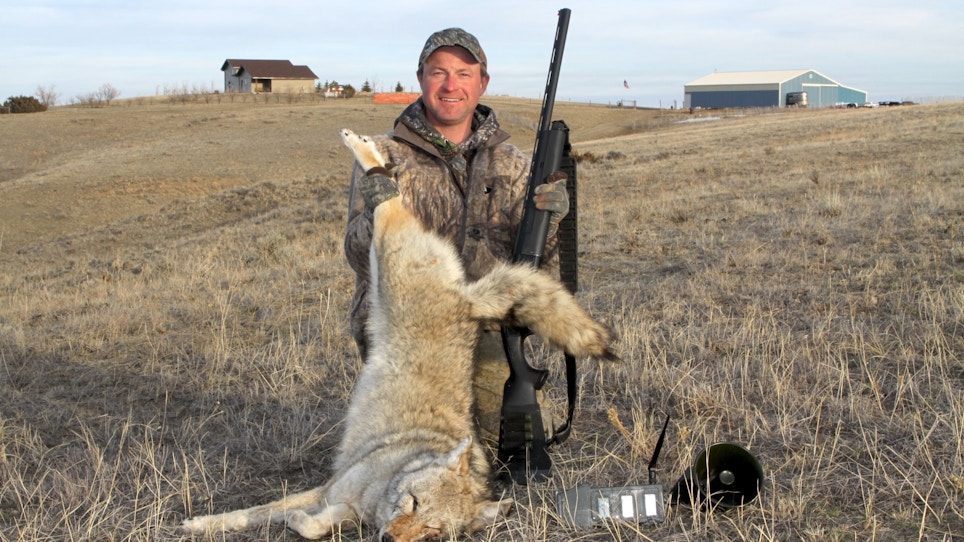
Hunting coyotes in urban settings may necessitate a few changes, including using a shotgun instead of rifle and switching up calling tactics. (Photo: Mark Kayser)
If you're itching for hunting action, take a closer look around your neighborhood — and not too see if your neighbor purchased a new lawnmower. Your analysis is for the possibility of hunting urban coyotes that could be dwelling between domiciles. If your investigation found fur, the next step is to strategize your way to target a city-slicker coyote.
Taking into consideration that you can hunt borders, your go-to strategy should be based on calling. The short answer to calling is that any coyote in any location will respond to any prey that sounds tempting. They may not have heard the dying screams of a tree sloth, but it’s likely it sounds susceptible. The longer version of this strategy includes reviewing research on urban coyote diets and the top information comes from the Chicago-based, Urban Coyote Research Project.
Kicked off in 2000, this nearly two-decade research program has been following coyotes throughout Cook County to understand their love affair with Chicago. What they discovered is these coyotes hunt many of the same prey species as coyotes living in the American Outback.
In one study they collected nearly 1,500 scat samples from sites throughout the county. Some of the samples originated from more urban areas than others, but the dominant prey species in all included small rodents (no surprise here), whitetail deer, cottontails and birds. Fruit also was a preferred menu item, but it can difficult at best to recreate the sound of a distressed apple. Many of the menu items varied with the seasonality of availability, such as food and fawns.
Nevertheless, all of these sounds are found in the typical library of most electronic callers. Of course many associate urban coyotes with missing cats. The study did note that house cats ended up on the menu, but they fell below human garbage and even the lowly muskrat. Another human-associated food that showed up in the samples was dog food. Again that’s a tough one to mimic, but good to know if you know the location of a crazy dog person (or cat person too).
Additional research revealed that coyotes were also keen to pheasants released at nearby hunting preserves, presumably due to their ease in capture. Plus, trail cameras also revealed coyotes targeted urban geese. By posting cameras at nests the footage revealed coyotes were not preying on adults as much as the eggs, but both were eyed for meals.
What this tells you is that in addition to traditional sounds you have options to perk the ears of coyotes with some new sounds you may not have considered. The squalls of a domestic cat can be found in digital libraries, but you may have to resort to hand calls to recreate the squawking of distraught pheasants or geese. My good friend Matt Piippo turned me on to the tormented sound of a pheasant several years ago as a new sound to pique a coyote’s interest.
Learn Travel Ranges
A secondary strategy to employ relies on scouting preferred travel routes of coyotes. Several veteran coyote researchers have used night vision technology to spy on urban coyotes. Their boldness after sunset is amazing. They walk just about anywhere they want to under the veil of darkness. During daylight hours they oftentimes curb the brashness and stick to cover or green areas as travel corridors.
During my recent visit to Arizona I observed daytime coyote movement, but not down the paved streets. The coyotes were using human-developed arroyos, or water channels, as their paths. The banks allowed them to travel out of sight in the bottoms of the washes, oftentimes passing with feet of golfers.
By noting any brushy corridors, green areas and riparian zones, you may find a coyote travel route leading from suburbia for ambush. Set up downwind of one of these conduits during dawn and dusk for the possible meeting of a townie coyote.
Urban coyotes have discovered the comforts of city living like many Americans. They are here to stay, but that doesn’t mean you can’t hunt them when they stray back across the rural boundary.





